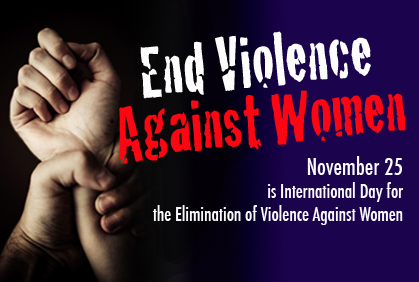Hello dear readers!
In this week I have been working on this article about "The Nobel Prize" and I decided to choose the chemistry price from 1995 because when I read that those people work on the atmosphere, particularly in the formation and decomposition of ozone, I decided from that moment that I wanted to do the article about them. I suppose that you will enjoy reading this article.
The Nobel Prize in Chemistry 1995
The 1995 Nobel Prize in Chemistry was decided to award to this three persons by The Royal Swedish Academy of Sciences:
| Paul J. Crutzen |
| F. Sherwood Rowland |
| Mario J. Molina |
The reason of their Prize was, that their work in atmospheric chemistry, particularly concerning the formation and decomposition of ozone.
Paul Jozef Crutzen (born December 3, 1933) is a Dutch Nobel Prize winning atmospheric chemist. He was a long-time adjunct professor at Georgia Institute of Technology and research professor at the department of Meteorology at Stockholm University, Sweden. He has won a lot of award but the most notable awards are: Tyler Prize for Environmental Achievement (1989), Volvo Environment Prize (1991), Nobel Prize in Chemistry (1995). In 1970 he showed that the nitrogen oxides NO and NO2 react catalytically (without themselves being consumed) with ozone, thus accelerating the rate of reduction of the ozone content.
Frank Sherwood Rowland (June 28, 1927 – March 10, 2012) born in Delaware, Ohio. He was an American Nobel laureate and a professor of chemistry at the University of California, Irvine. His research was on atmospheric chemistry and chemical kinetics. His best-known work was the discovery that chlorofluorocarbons contribute to ozone depletion. Rowland received his B.A. from Ohio Wesleyan University in 1948. He held academic posts at Princeton University (1952–56) and at the University of Kansas (1956–64) before becoming a professor of chemistry at the University of California, Irvine, in 1964. At Irvine in the early 1970s he began working with
Mario Molina. Rowland was elected to the National Academy of Sciences in 1978, and served as a president of American Association for the Advancement of Science (AA AS) in 1993. His notable awards were: 1995 Nobel Prize in Chemistry, 1994 Albert Einstein World Award of Science, 1993 Peter Debye Award, 1989 Japan Prize, 1983 Tyler Prize for Environmental Achievement and 1976 Tolman Award.
Paul Crutzen, Mario Molina and Sherwood Rowland have all made pioneering contributions to explaining how ozone is formed and decomposes through chemical processes in the atmosphere. Most importantly, they have in this way showed how sensitive the ozone layer is to the influence of anthropogenic emissions of certain compounds. The thin ozone layer has proved to be an Achilles heel that may be seriously injured by apparently moderate changes in the composition of the atmosphere. By explaining the chemical mechanisms that affect the thickness of the ozone layer, the three researchers have contributed to our salvation from a global environmental problem that could have catastrophic consequences.
Ozone is formed in the atmosphere through the splitting of ordinary oxygen molecules (O2) by ultra-violet radiation from the sun.
The Nobel Prize in chemistry has been awarded on 107 occasions, being a total of 157 recipients including the 2009 Nobel Prizes. Reviewing the database of winners of the Nobel Prize in chemistry, we check that the only person who has achieved two times the Prize was Frederick Sanger, in 1958 and 1980.
Marie Curie is perhaps the most popular name among the winners of the Nobel Prize in chemistry. Physics and chemistry Polish had obtained the Nobel Prize in physics together with her husband, Pierre Curie in 1903.
But do you really know where the creation of The Nobel Prizes comes from?
The Nobel Prize is an international award that is given annually to recognise people who have carried out research, discoveries, or notable contributions to humanity in the immediately preceding year.
The awards were instituted in 1895 as the last will of Alfred Nobel, industrial Swedish, delivering for the first time in 1901 - and even today - in the categories of physics, chemistry, Physiology or medicine, literature and peace. Was established in 1968 also related Prize in economic sciences in memory of Alfred Nobel.
The Royal Academy of the Sciences of Sweden is responsible for naming the winner of the Nobel Prize in physics, Nobel Prize in chemistry and the Prize in economic sciences in memory of Alfred Nobel; the Karolina's Institute Nobel Assembly choose the winner of the Nobel Prize of Medicine and the Swedish Academy named the winner of the Nobel Prize for literature. All them are delivered in a ceremony held every December 10 in Stockholm, Sweden. The Nobel Peace Prize, instead it is elected by the Norwegian Nobel Committee delivered in the city of Oslo, and in Noruega.The different awards are presented each year. Each winner receives a gold medal, a diploma and a sum of money determined by the Nobel Foundation, which amounted to 8 million kronor, about 874 thousand euros in 2013.The Prize not may be awarded posthumously, unless the winner has been appointed before his death; and if the award is shared, the amount of money will be divided among the winners, which may not be more than three.
I hope you will like my post dear readers, remember that you can comment. I will, publish another work soon.
Bye!


